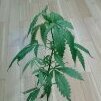

Pięć środków leczniczych, które można stworzyć z nadwyżki uprawy marihuany
-
Podobna zawartość
-
Legalizacja marihuany sposobem na kryzys? 1 2
Przez Macky,
- marihuana
- legalizacja marihuany
- (i 1 więcej)
- 16 replies
- 2330 wyświetleń
-
- 0 replies
- 1229 wyświetleń
-
KONOPIE LECZĄ - Medyczna marihuana w Polsce - co dalej?
Przez Macky,
- konopie leczą
- medyczna marihuana
- (i 1 więcej)
- 2 replies
- 1742 wyświetleń
-
Od dziś marihuana w Czechach jest lekarstwem. "To sukces, ale czemu nie ma refundacji?"
Przez Macky,
- 2 replies
- 1165 wyświetleń
-
- 104 replies
- 119574 wyświetleń
-









Recommended Posts